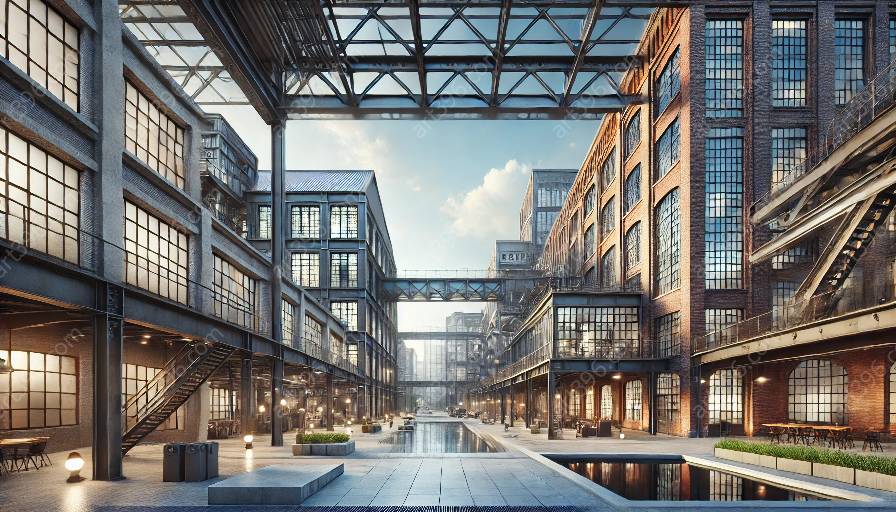Industrial architecture plays a crucial role in shaping the physical and social aspects of collaborative work environments. By integrating elements such as open floor plans, adaptive reuse of industrial structures, and multipurpose spaces, industrial architecture contributes to the establishment of a versatile and conducive workplace for collaboration and creativity.
The Evolution of Industrial Architecture and Collaboration
Industrial architecture has undergone significant transformations over the years, reflecting the shift in workplace dynamics and the increasing emphasis on collaboration. Traditional industrial buildings, once characterized by segregated work areas and hierarchical structures, have evolved into innovative spaces that prioritize inclusivity and teamwork.
Key Elements of Industrial Architecture in Collaborative Work Environments
Open Floor Plans: Industrial architecture often features open floor plans that promote seamless interaction and communication among employees. The absence of physical barriers encourages fluid movement and fosters a sense of unity and collaboration within the workspace.
Adaptive Reuse: The repurposing of industrial structures for contemporary work environments has gained traction as a sustainable and design-forward approach. Retaining the authentic industrial aesthetic while incorporating modern amenities creates a unique setting that inspires creativity and cooperation.
Multipurpose Spaces: Industrial architecture embraces the concept of multipurpose spaces, allowing for flexible use and adaptability. These versatile environments accommodate various collaborative activities, from brainstorming sessions to team meetings, promoting a dynamic and agile work culture.
Design Principles for Collaborative Work Environments
Integration of Nature: Industrial architecture often incorporates natural elements such as ample sunlight, greenery, and outdoor areas, fostering a connection with the environment and enhancing the well-being of employees. This integration creates a refreshing and harmonious atmosphere that supports collaboration and innovation.
Utilization of Raw Materials: The use of raw materials and exposed structural elements in industrial architecture adds an authentic touch to the workspace, evoking a sense of authenticity and creativity. The aesthetic appeal of industrial materials contributes to an inspiring environment that stimulates collaboration and ideation.
Flexible Layouts: Embracing the concept of adaptability, industrial architecture employs flexible layouts that enable seamless reconfiguration of spaces to meet evolving collaborative needs. The capacity to customize the workspace fosters a sense of ownership among employees and promotes collaborative problem-solving.
Benefits of Industrial Architecture for Collaboration
Creative Stimulus: The industrial aesthetic and spatial design of industrial architecture serve as a creative stimulus, igniting innovative thinking and collaborative endeavors among employees. The distinctive environment inspires originality and resourcefulness, contributing to a vibrant collaborative culture.
Community Building: Industrial architecture nurtures a sense of community within the workplace, encouraging social interaction and teamwork. The enhanced connectivity facilitated by the architectural design promotes knowledge sharing, collective problem-solving, and a supportive work community.
Conclusion
Industrial architecture significantly influences the creation of collaborative work environments by providing a framework that aligns with the evolving needs of modern organizations. Through its emphasis on openness, adaptability, and authenticity, industrial architecture fosters a dynamic and inclusive workspace where collaboration thrives, ultimately contributing to the success and innovation of businesses.





























































